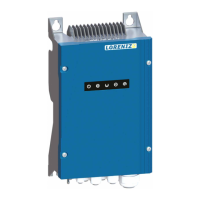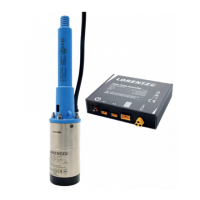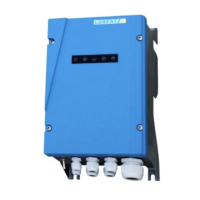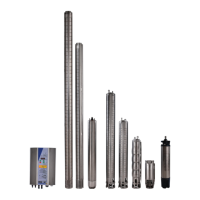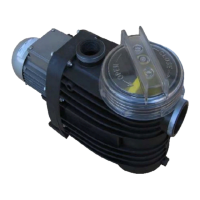Helical Rotor Models12.2
Positive displacement action The helical rotor pump
differs from centrifugal pumps in that it maintains high
efficiency and lift capacity even at low rotational speeds
and low flow rates. This allows the pump to work with
a small, inexpensive solar array, and to function in low
sunlight conditions.
The helical rotor pump has only one moving part. It
produces a smooth flow and requires no valves to function.
It is far more reliable than diaphragm and piston-type solar
pumps.
Helical Rotor Pump HeadFigure 29:
coupling flex shaft helical rotor rubber stator non-return valve
Sealed cavities trap water and progress toward the outlet
Close-up of Figure 30:
helical rotor
Close-up of the same rotor.
This is a test specimen that
pumped extremely sandy wa-
ter for 500 hours in the test
lab. The surface is almost like
new, and the pump performs
to full specifications.
Motor with Figure 31:
helical rotor attached,
stator housing removed
Self-cleaning action The rotor sweeps the full surface
of the rubber stator with every turn. It is impossible for de-
posits to accumulate. Solid particles tend to roll away from
the contact area, making the pump extremely resistant to
abrasion. Particles that are trapped against the rubber are
tolerated by the flexibility of rubber.
Some history Helical rotor pumps have been used in
the oil industry for over 60 years. They are used to pump
concrete! They have been used for solar pumping since the
1980s, but were very expensive until the LORENTZ helical
rotor pump was introduced.

